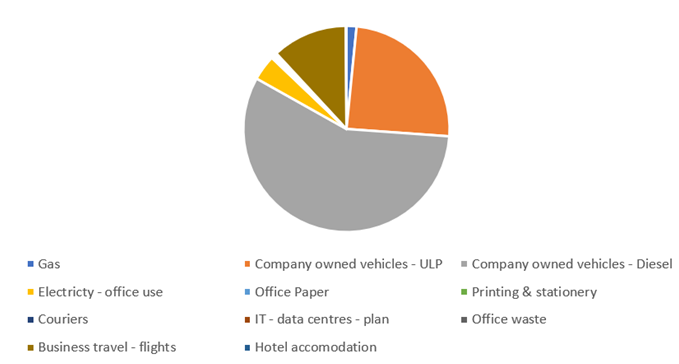Net zero – what’s in it for me?

This series of blogs is designed as a trip through the net zero process, assisting you to understand how the process can increase the profitability of your SME with reduced overheads and enhanced corporate image.
The series is dynamic, bringing you up-to-date information and the latest news in all aspects of carbon accounting, carbon reductions and carbon offsetting.
Combining the information pro-offered in different public reports it may well be that the budget for 1.5°C global warming has already been exceeded and that to keep warming to 2°C warming there must be an immediate reduction in global carbon dioxide emissions from the present 36 gigatonnes per annum to a maximum of 25 gigatonnes per annum.
There will also need to be drastic cuts in other common greenhouse gases such as methane, nitrous oxide and fluorinated gases.
To achieve this, it will be imperative that organisations worldwide begin to achieve net zero status now, with immediate programs to get there sooner rather than later.
Not least of concern for SMEs is the heightened level of risk that comes with climate change. This could be financial, regulatory, supply chain, product & technology, compliance/litigation and reputational risk).
Establishing a net zero regime could be categorised as a control to help remove or reduce climate change risk.
So what does the term net zero mean?
It can be described by the formula:
Net zero = Carbon footprint – Carbon offsets
A carbon footprint is the amount of carbon emissions a business is responsible for in its trading operations. Carbon offsets are created in programs that are responsible for removing carbon dioxide from the atmosphere or avoiding greenhouse gas emissions.
Both carbon emissions and carbon offsets are counted in tonnes.
The steps to net zero can be summarized as follows:
- Calculate the organisation’s carbon footprint.
- Put in place a plan to minimize the organisation’s carbon footprint i.e. reduce its emissions.
- Commence acquiring eligible carbon offsets annually equal to the organisation’s annual carbon footprint.
The fortunate part about the net zero process is that it has inherent advantages for your SME operation as it:
- Informs owners/managers of what are the carbon emissions of their SME.
- Highlights inefficient processes.
- Indicates ways their carbon footprint can be reduced profitably.
- Enhances corporate social responsibility & ESG credentials.
- Positions the SME to meet customer/tender ESG requirements.
Possibly the greatest advantage though, is that allows the SME to make a target. The carbon footprint aspect of the net zero process not only gives a total of carbon emissions, it also categorises the source or type of the total carbon emissions.

For example, if the SME’s carbon footprint is 1000 tonnes of carbon emissions for the 2021 financial year, we have not only established a base year of carbon emissions, but we also know where the emissions have come from.
So let’s work backwards to establish feasible reduction targets for the next five years. We can do this by looking at each category of emission.

Let’s suppose the diesel use of the delivery vans represents over half of the carbon footprint i.e. 550 tonnes of carbon emissions directly from the tailpipes of the vans. That is what can be titled a hotspot. The question then is, what can I do to reduce those emissions and save money in the process?
Some suggested steps could be to investigate:
- Opportunities for making the delivery runs more efficient.
- Use of biodiesel.
- Electric vehicle (EV) upgrade program.
Of course, it is important to build the business case for each option. For instance, the case development for an EV upgrade would include the calculation of internal rate of return of new acquisitions, the feasibility for a renewal energy source to charge the EVs or green power cost etc.
Line-by-line the carbon footprint can be reviewed and options explored with the objective of decreasing each category of emission. From there, short and long term targets can be set. A common timeframe is over a five-year period.
Of course achieving targets of carbon emission reduction will invariably lead to reduced expenses in the profit & loss statement, and hence, more profit. However, the chances of further expense reductions and heightened revenue streams are also very real.
There is ample evidence that staff wellbeing and productivity are improved when employees know their employer is taking action to help the environment, especially in relation to that company’s operations.
Further, the Deloitte Millennial Survey 2019 indicates that potential employees increasingly have moral concerns about how green an organisation is. Amongst millennials from around the world, climate change and protecting the environment is their top concern.
Deloitte’s findings also suggest younger workers are looking for more than just good pay, and “show deeper loyalty to employers who boldly tackle the issues that resonate with them most, such as protecting the environment”.
Of course, staff buy-in is essential too in the net zero journey, like turning off lights and computers at the end of the day or using recycling bins come down to the behaviour of staff.
The other issue that is on the rise is the greenwashing claim and its damage to company reputations. A proper net zero program will ensure an SME has control over carbon emission claims.
